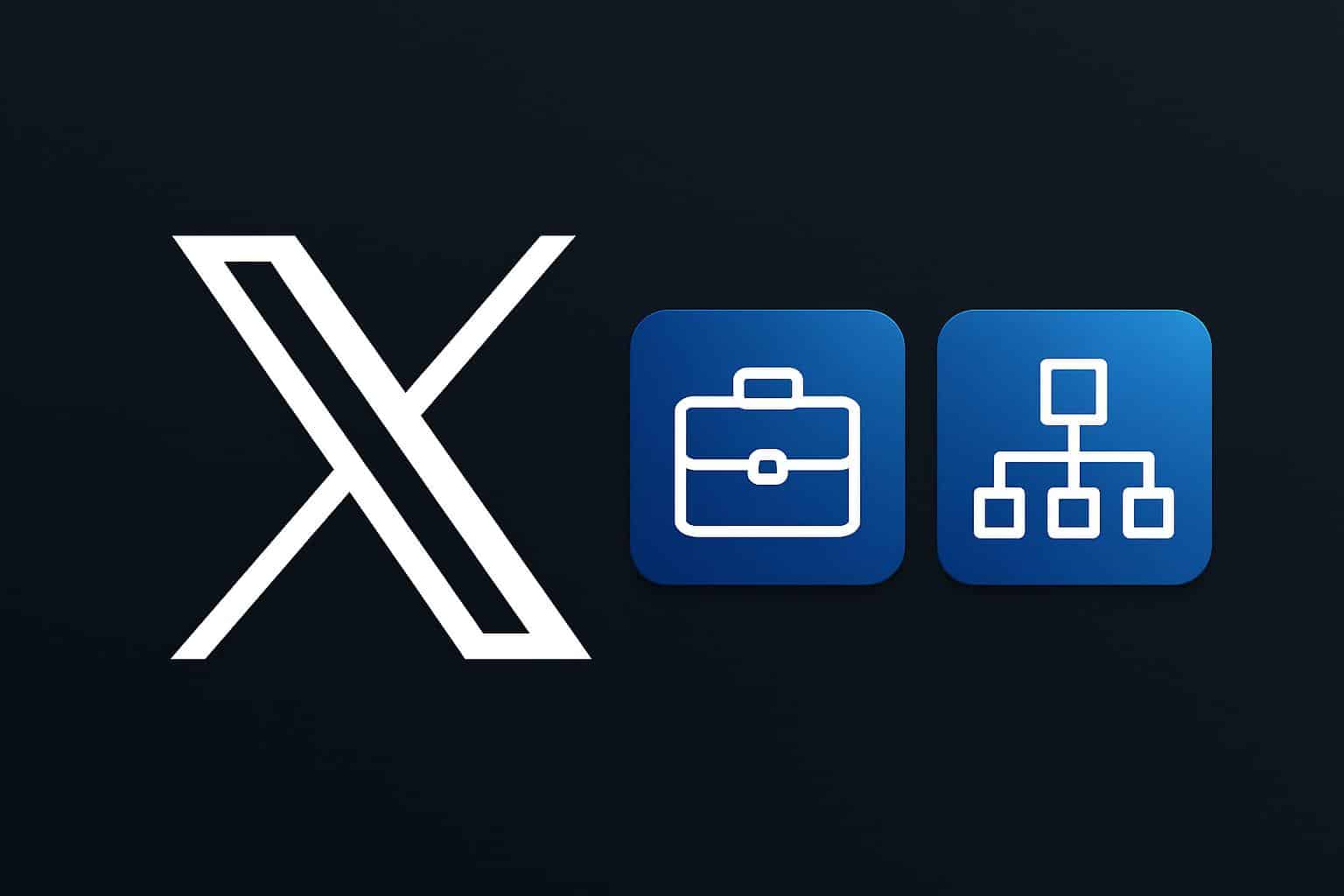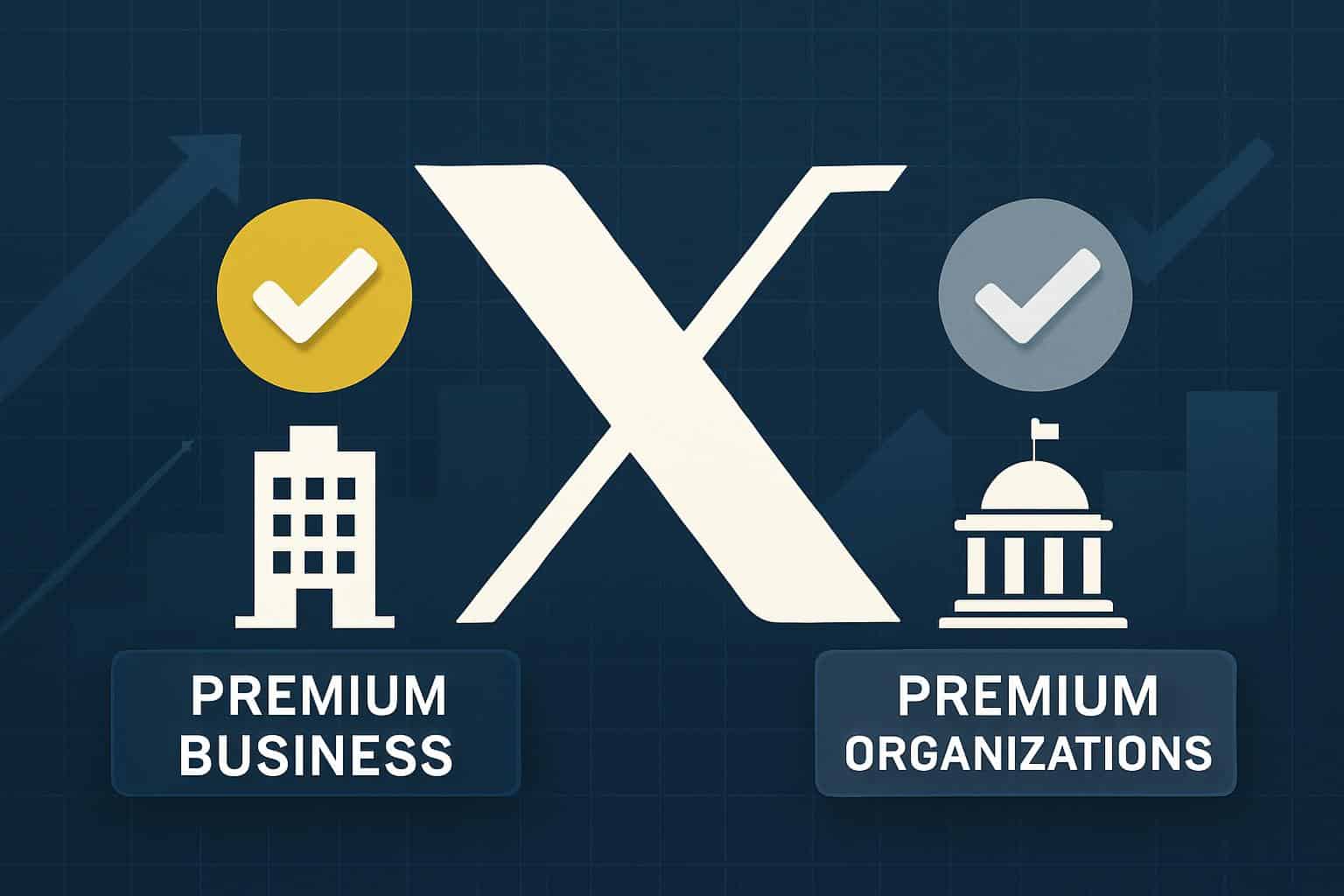X is revamping its enterprise verification program, dividing the previous Verified Organizations into two offerings: Premium Business for companies and Premium Organizations for governments and multilateral bodies. The company is also honing visual signals, a gold checkmark for businesses, a gray one for public-sector services.
The shift also clarifies who gets what badge by introducing tiered pricing as well as a deeper toolbox for growth, security, and faster support. It’s the latest evidence of X trying to turn institutional users into subscribers with functionality designed to address credibility, impersonation risks, and high-touch account needs.

Why X is Recasting Verification for the Enterprise
Once the platform deprioritized legacy verification, authenticity signals have been a pain point for brands and agencies, and also for public servants. Keeping commercial and public-sector offerings separate is also what allows X to build features for very different operational realities—customer acquisition versus public information—without pulling the rug out from under a badge’s meaning.
Industry groups like the Interactive Advertising Bureau have been pushing for more attention on the costs of brand-safety screw-ups, so those three-letter-acronymed businesses will actually make impersonation defense and response time a sellable thing. X’s split reflects wider market trends: paid enterprise tiers are now routinely bundled with workflow tools, analytics, and priority support in order to justify recurring fees.
What Premium Business Includes for Verified Companies on X
Premium Business helps companies grow and control their presence on X. In addition to the gold checkmark, accounts are visible with affiliate badges connecting parent brands to subsidiary, franchise, or regional handles—ideal for retailers, media networks, or multi-brand portfolios seeking unified brand recognition.
Security and service are the focus: X is promoting advanced impersonation protections, quicker human help with issues, priority handling for items along those lines (such as responding to reports), and early access to new features. Growth tools are part of the package as well, such as hiring, monitoring your brand and industry in real time, and SuperGrok, the company’s AI assistant for research and content workflows.
There are three Business tiers:

- Basic is the minimum to get you started.
- Full Access adds affiliates, priority service, and increased protections.
- Enterprise includes high-level features and specialized account management for advanced organizations.
Pricing tiers and incentives across business and public plans
Business Basic costs $200 per month. Full Access costs $1,000 a month. Enterprise is priced on a custom basis by scope and support.
Premium Organizations — the public-sector track — costs $1,000 a month and includes gray checkmarks for governments and multilateral organizations. For a short while, X is providing ad credits worth 100% of the subscription price — creating an incentive that will cancel out fees while pushing organizations to spend on the platform’s ad products.
How Premium Organizations differs from business offerings
Premium Organizations seeks to reach government departments, municipalities, public-health organizations, and international organizations that broadcast at high volumes. The gray checkmark is meant to denote official public-sector sources, while the package emphasizes legitimacy and coordination between sister accounts — an important element during elections, emergencies, or policy rollouts. The distinction also helps ensure that commercial signals — say, affiliate badges linked to sales funnels — are kept separate from civic communications.
What It Means For Brands And Governments
For brand clients, the calculus is simple: how much are you willing to pay for visibility and safety features, the capacity to link up complex account hierarchies, and more responsive human support? The ad-credit promotion amounts to a discount on the up-front spending and essentially makes it prepaid media for a period of time—an approach that performance-minded marketers may find attractive, one person said.
For governments and multilateral organizations, a separate track eliminates fuzziness around identity and fits better with public-interest use cases. Disinformation researchers and watchdog groups have already warned that “it can be harmful if official channels are competing with copycats.” Clearer signaling and support could curb impersonation and miscues, which can chip away at trust.
As X further diversifies revenue beyond old-fashioned advertising, the division into Premium Business and Premium Organizations signals a pragmatic wager: formalize legitimacy with special badges, then stack on tools that make the subscription easier to rationalize in a procurement spreadsheet. As one X engineering lead put it in the company’s announcement, the goal is to get businesses moving more quickly and out to their audience—now with less murky lanes for public and private sectors.

